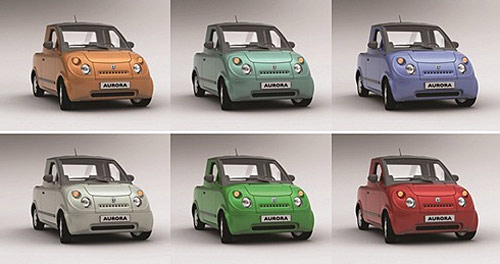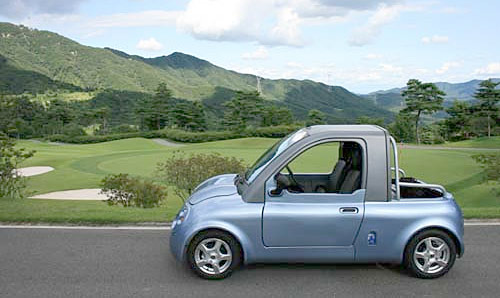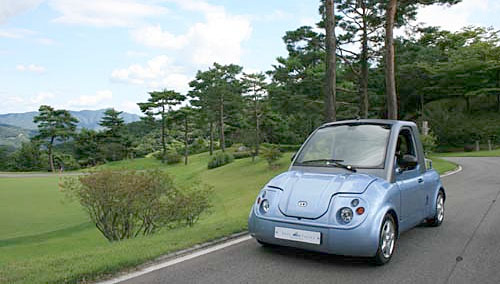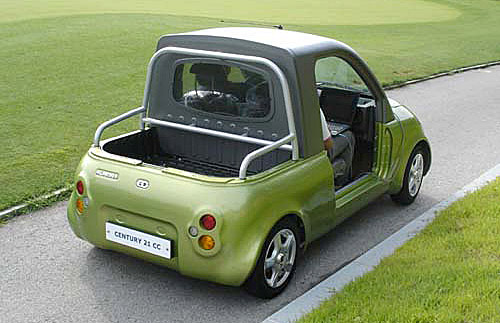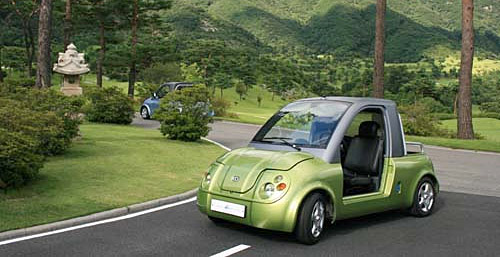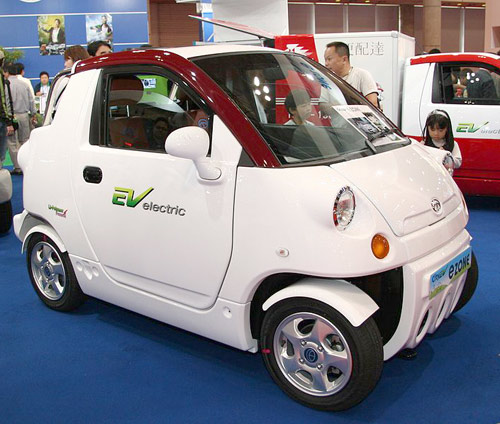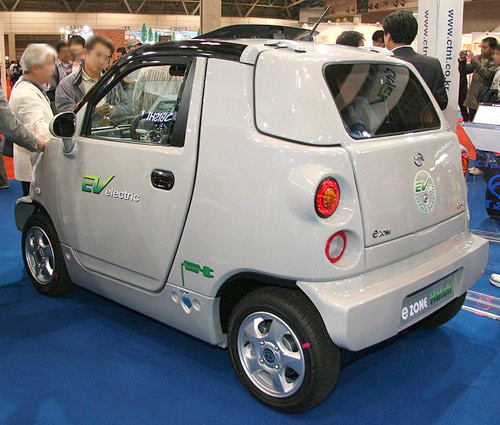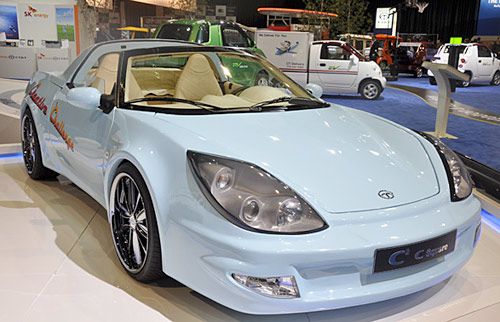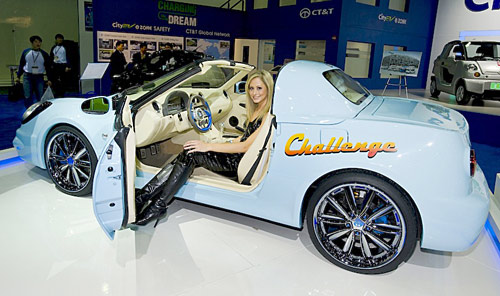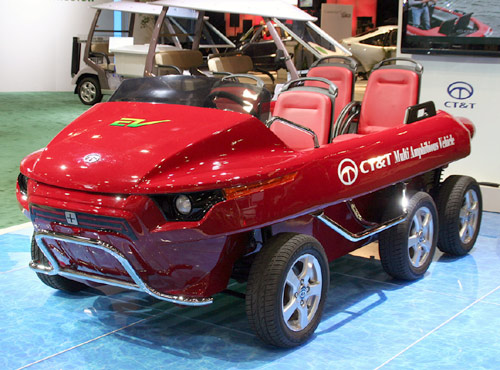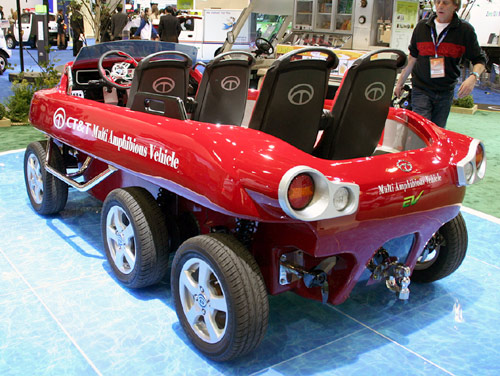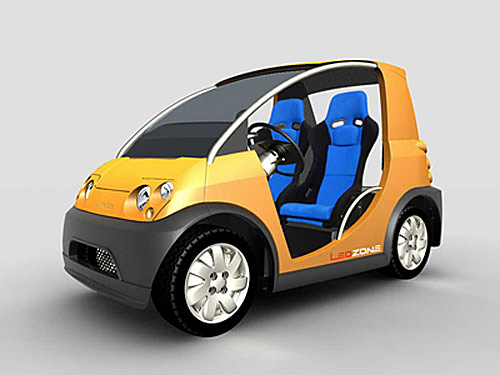
SGK E-passenger
Max Speed 130 Km/h, Drive Range 400 km per single charge, 0-100km: 5.5 sec. 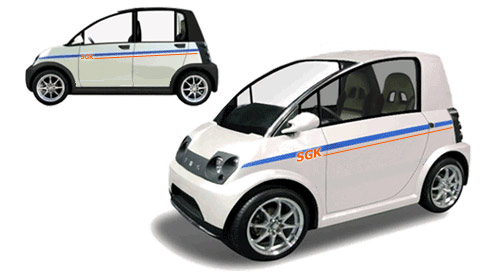
The SGK is a compact two seat vehicle ideal for short range transportation or utility work. The SGK can be customized into several types, and we plan to initially develop the SGK into a regular speed E-passenger vehicle and both a regular speed and low speed E-utility vehicle. We market the SGK E-passenger vehicle to the fleet customers such as rental car services, general government offices, police, military, etc. 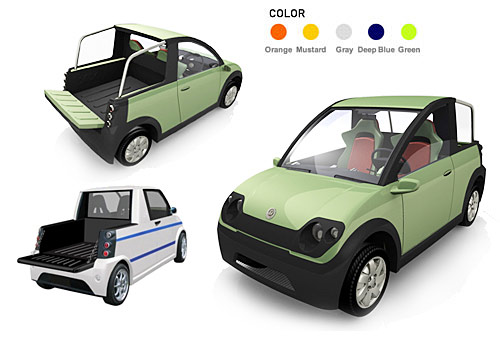
SGK Utility
Max Speed 130 Km/h, Drive Range 400 km per single charge, 0-100km: 7 sec
SGK Utility is a conversion from SGK. It was developed for the delivery and farming. 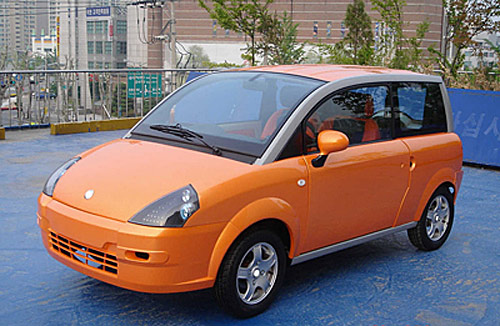
LEO EV3
Little-know Korean car maker Leo Motors is set to take on the might of Tesla in launching its own electric super car by the end of 2011.
Named the LZ-1, the car has impressive performance stats, even beating its Roadster rival from Tesla. Leo Motors says it expects that the car will have a top speed of up to 161 miles per hour, maximum torque of 68kg/m generated by its 240 kW electric motor. Meanwhile the Tesla Roadster for having a maximum speed 125 miles per hour, and a maximum torque of 40kg/m using 215 kW electric motor. Both cars have a range of around 249 miles per hour.
Strong yet super light, the car has carbon fibre body and aluminium alloy body. In development since 2006, the electric vehicle experts at Leo Motors crafted the model using new technologies emerging from 56 patents pending or accepted. 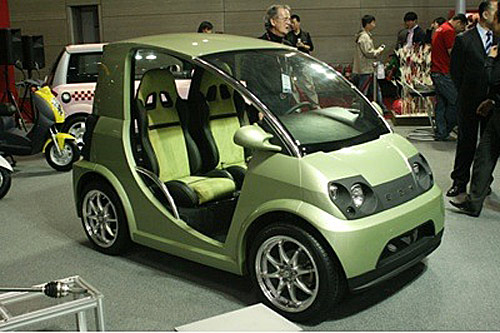
Leo will also develop LZ-1H-a plug in hybrid electric vehicle (PHEV) version which uses a mix of hydrogen and LPG to fuel the generator inside of the super car and keep supplying electricity to the electric power train. Using this technology, it is expected that LZ-1H will drive 560 miles per fuelling.
The firm has already finished the development of rolling chassis for the vehicles.
John Lee, CEO of Leo Motors, is working with Wayne Draper and Steve Park, former chief designers of Ford, for the styling of the car. According to Mr. Lee: “Our goal is to make the new electric super car drive 0-60 miles per hour from the start within 2.9 seconds. If the goal is achieved Leo’s new super car would be the fastest among EVs including Tesla.”
Leo Motors

